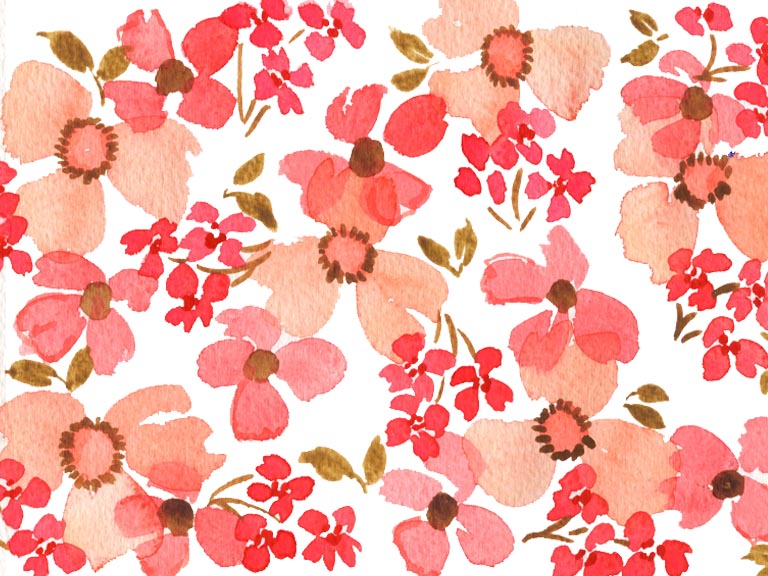Floral scatter patterns are a fantastic method to paint flowers in watercolour. It’s such a relaxed way to paint and you can fill up your whole sheet of paper with floral elements in a meditative type of exercise. If you’re after a relaxed style, scatter patterns are the best way forward!
What is a scatter pattern?
In essence, scatter patterns are imagining that you have taken a bunch of flowers and leaves, thrown them up into the air and let them land on your desk in a random, scattered way. Then you’re going to paint the pattern that you can see in the way they’ve landed.
For this scatter pattern exercise, we’re going to be looking at a random assortment and lots of curves and shapes. We’ll also look at some layering with objects lying on top of each other.
Choosing the right flowers
There’s no wrong way to create a scatter pattern but these are some tips to pick a good selection of flowers. You’re going to want to choose flower types that look good in silhouette. I prefer dainty flowers for these with lots of fine stems and little details – wildflowers are a great example.
That’s not to say you can’t do larger flowers like roses or daffodils, you just need to make them smaller like you’re looking at them from further away. I recommend having two to four types of flower plus some accompanying leaves for a good scatter pattern.
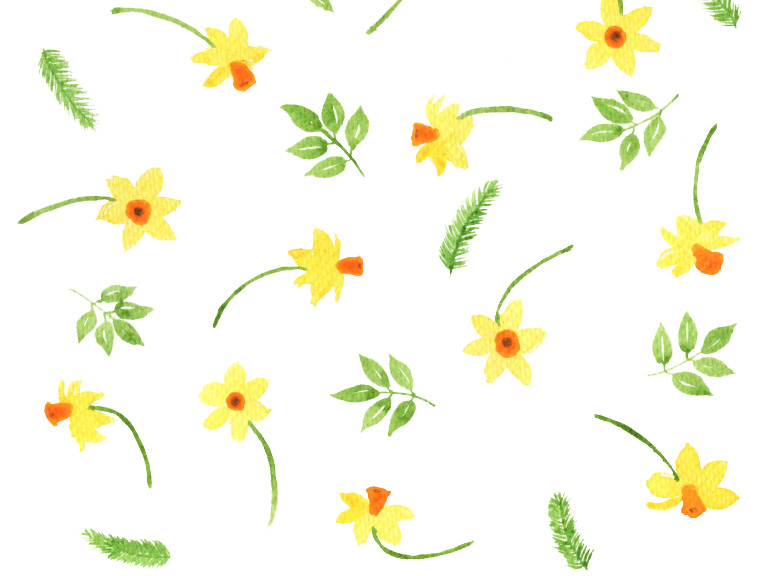
Make sure you have leaves too
It’s very important to have leaves for a scatter pattern because just flower heads on their own can look disjointed. And if you’re working loose and not putting in the details of flowers, that flash of green alongside the colour makes it clear that they are flowers. Finally, if you’re adding stems, make sure that their curved instead of straight so they don’t look stick-like and childish – it’s amazing what a difference that simple trick makes!
Take my class on painting watercolour leaves.
Picking a colour palette
Before you start, it’s important I think about your colours. Perhaps you want something light and harmonious like pale yellows and greens for spring. You can also use bolder colours and contrast like reds and greens for a Christmas composition, or vibrant pinks and inky blues for something deep and punchy.
Be careful not to mix too many colours into your scatter pattern or it can start to feel chaotic. If you do want to use contrast colours, you can always make one of the values really light. For example if you have bold red flowers then you’ll want a pale green leaf in comparison, so it doesn’t overwhelm the flowers.
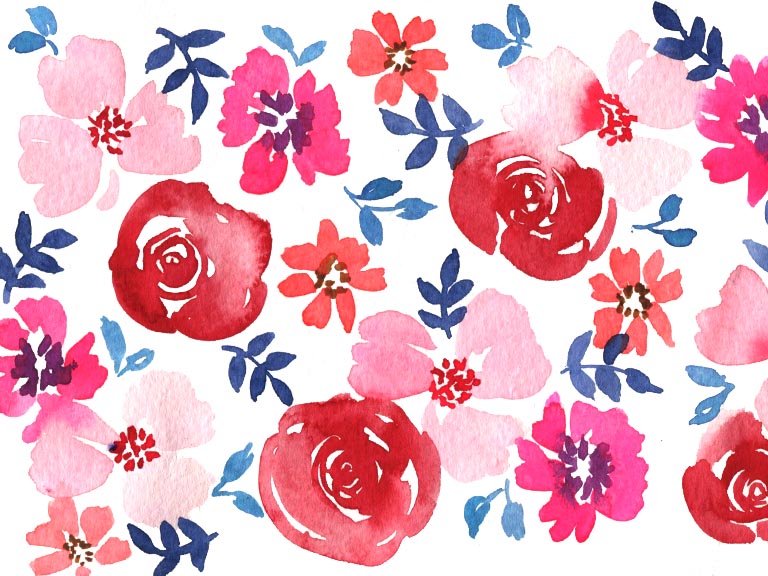
Assembling your floral scatter pattern
Here are my top tips for assembling a scatter pattern in loose florals.
1. Get the large elements in place
First put your large elements in place, so start with your biggest flower. Ideally you want an odd number of these, so three or five instead of four. This helps create balance in the composition. I also like to think about placing them in diagonal instead of symmetrically or in straight lines.
If you’re using stems, make sure that these are curving and pointing in different directions to create something like a wave or a spiral instead of all lining up. Often in composition we talk about creating harmony instead of symmetry and that’s what we are aiming for here.
2. Add supporting pieces
Now it’s time to add your supporting pieces that could be a medium sized flower or branch of leaves. Follow the same rules as above using an odd number and focusing on diagonals or curves. You can overlap your pieces if you want to make them look like they’re layered or you can keep them separate if you want to create a sense of space.
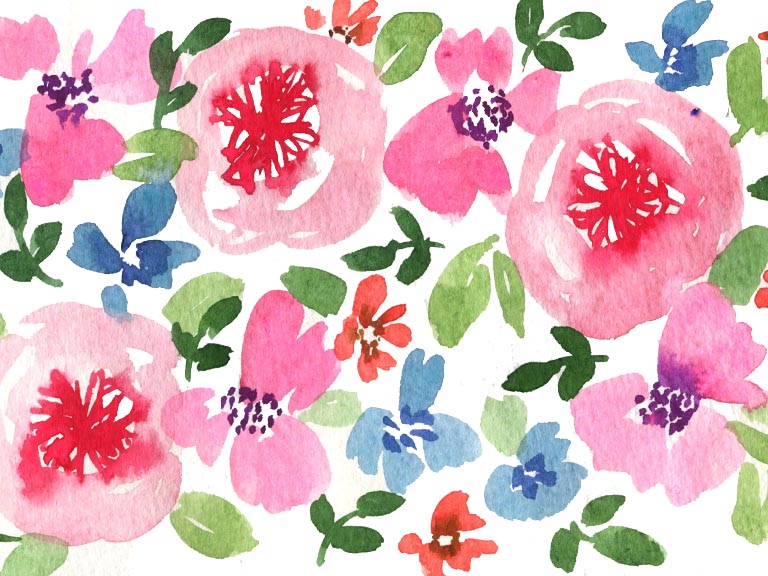
3. Filling gaps
Finally it’s time to fill gaps with your smallest elements. It helps at this point to take a step back from your composition and look at what it’s missing. It’s very easy to overdo a floral scatter pattern and fill the whole page with so many elements that it becomes busy. You’re looking for gaps of white paper that look odd, but try to resist the urge to fill every inch of space! A little breathing room is good for a composition.
It’s really hard to explain or know when to stop painting in a composition like this so my advice is to keep taking breaks and stepping back. If you’re not sure about adding an element in a spot, just don’t paint it.
Overlaying darker elements
If you’re wanting to work in overlapping layers, I recommend using a watercolour technique of working from lightest to darkest value. One of my favourite ways to do this it’s just start with a pale leaf element, then add the flowers and darker leaves over the top. you should be building up and working towards your darkest element last, which goes on top. This light-to-dark method creates depth in the piece and pulls the darkest elements forward.
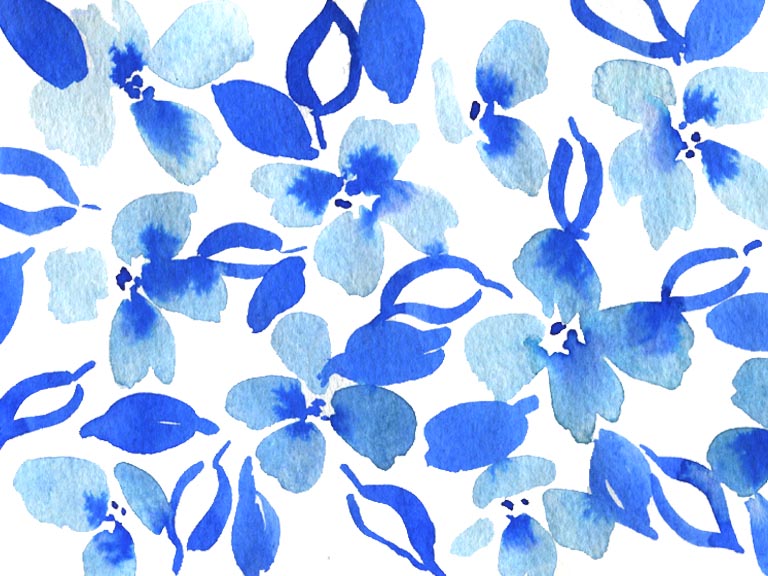
Add details to your pattern
You can always come back to your scatter pattern later to add more details with wet-on-dry technique. This could be flower centres or vein details on leaves, or you could add tiny little flowers in gaps. You could also layer over details in a white paint or gouache for your flower centres or leaf veins.
Colourful backgrounds
If you want your scatter pattern to have a colourful background, there are lots of ways to do this. If your background is going to be relatively light anyway, you could paint it first in a light wash and let it dry before adding your pattern elements over the top. If you have a steady hand and a lot of patience you could add a colourful background once you finished your pattern, painting carefully around all your elements.
Now you know how to paint floral scatter patterns in watercolour. You can use any type of flower and leaf, fun colour palettes and change up the direction or size to create these beautiful patterns.
More guides to painting watercolour florals
Download my free watercolour supply guide
Feeling overwhelmed and confused by watercolour paints, papers and brushes? Download my free guide filled with insider info, including a list of good supplies for every budget, and my complete supply list!
